When it comes to safeguarding valuable assets, the titanium vault stands as a paragon of both strength and reliability. Built from one of the most robust materials on earth, a titanium vault offers unparalleled resistance to physical breaches, fire, and other potential threats.
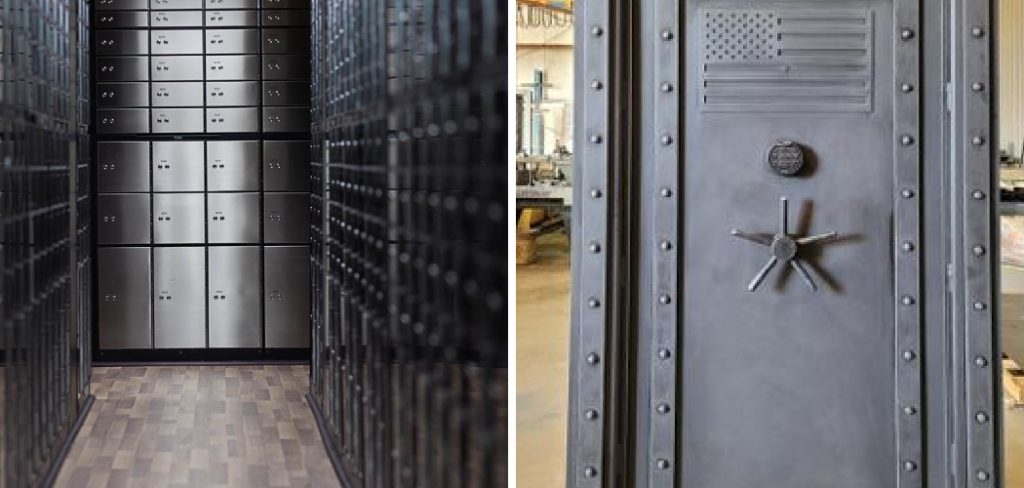
However, ensuring its security extends beyond the mere material; it requires a comprehensive approach that integrates cutting-edge technology, access control, and maintenance practices. This guide on how to secure titanium vault will explore the essential steps and strategies to fortify your titanium vault, ensuring that your most precious items remain protected against any possible danger.
Why is It Important to Secure Your Titanium Vault?
A titanium vault often holds high-value assets, including cash, jewelry, confidential documents, and other valuable items. Whether you are a financial institution storing large sums of money or a homeowner protecting family heirlooms, the importance of keeping these assets safe cannot be overstated.
Moreover, when clients entrust their valuables with you, they expect top-notch security measures to ensure their belongings remain untouched and secure. A breach in your titanium vault’s security could result in irreparable damage to your reputation and financial loss.
Needed Materials
Titanium Vault:
The first step in securing your titanium vault is ensuring that it is, indeed, made of titanium. Titanium boasts high strength-to-density ratio and excellent corrosion resistance, making it the perfect material for a secure vault.
When purchasing a titanium vault, be sure to source from reputable manufacturers and insist on certification to guarantee authenticity. Additionally, ensure proper installation by trained professionals to maximize its security capabilities.
Alarm Systems:
Alarm systems are an essential part of securing your titanium vault as they serve as an immediate alert during a potential breach. These systems come in various forms, including motion sensors, door/window contacts, and glass break detectors.
Ensure that your alarm system is connected to a central monitoring station for swift response in case of any security threats. Regular maintenance and testing of the system are crucial to ensure its reliability.
Biometric Access Control:
Biometric access control is a cutting-edge technology that uses unique human characteristics such as fingerprints, facial recognition, and iris scans to grant access to authorized individuals. This form of access control offers a high level of security as it eliminates the risk of unauthorized entry with stolen keys or codes.
When implementing biometric access control, be sure to choose a reputable provider and regularly update your systems for optimal performance.
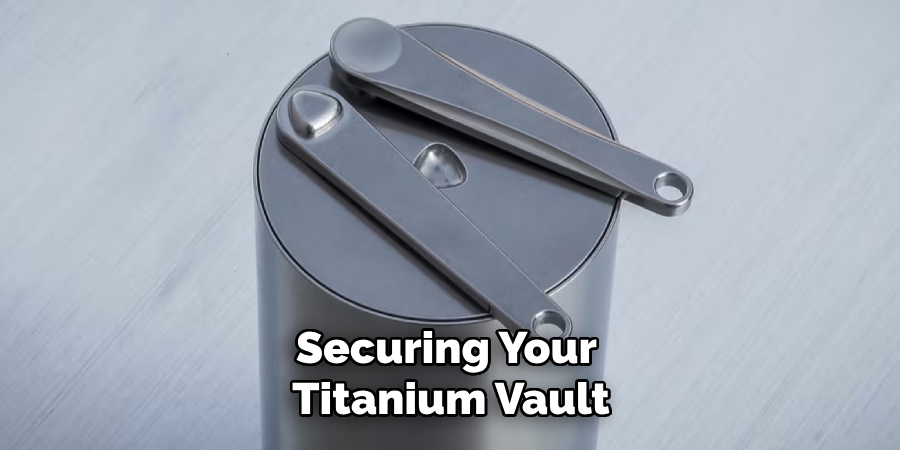
10 Steps on how to secure titanium vault
Step 1: Install Advanced Security Systems
One of the most crucial steps in securing a titanium vault is investing in advanced security systems. These systems often include sophisticated surveillance cameras, motion sensors, alarms, and other monitoring devices that can detect any unauthorized access or suspicious activity.
Additionally, integrating biometric scanning technology for access control ensures that only authorized individuals can enter the vault.
Step 2: Conduct Regular Maintenance Checks
Regular maintenance checks are essential to ensure that all security measures are functioning correctly. This includes checking surveillance cameras, alarm systems, and making sure there are no weak spots in the vault’s structure. Any potential issues should be addressed immediately to prevent any security breaches.
You should also regularly change the access codes and perform software updates on your security systems to prevent any potential vulnerabilities.
Step 3: Implement Strong Access Control
Controlling who can enter the titanium vault is crucial in maintaining its security. Biometric access control systems provide a higher level of protection than traditional keys or codes, as they are nearly impossible to replicate or bypass.
Additionally, limiting the number of individuals with access to the vault and implementing strict protocols for entry can further enhance its security.
Step 4: Conduct Background Checks on Employees
Conducting thorough background checks on employees who have access to the titanium vault is a vital precautionary measure. These checks help ensure that only trustworthy individuals are entrusted with the responsibility of safeguarding high-value assets. By reviewing an employee’s history and credentials, you can identify any past behavior that might pose a risk to the vault’s security. This process typically involves verifying criminal records, employment history, and references
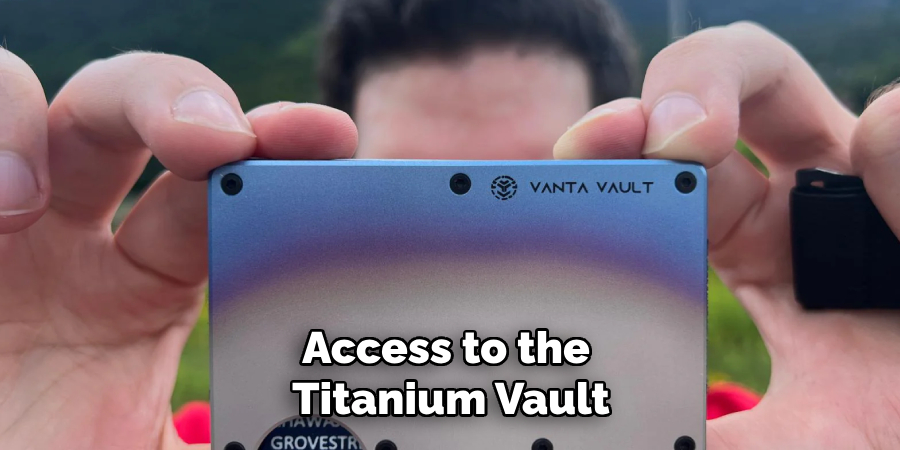
es. Regularly updating these background checks ensures the ongoing reliability and trustworthiness of the employees involved, mitigating potential insider threats.
Step 5: Use Layered Security Approaches
A layered security approach involves implementing multiple security measures to create a more complex and effective system. This may include combining access control with alarm systems, surveillance cameras, and other physical barriers to provide multiple levels of defense against potential breaches.
By taking a layered approach, you increase the difficulty for intruders to gain access and improve your titanium vault’s overall security.
Step 6: Educate Employees on Security Protocols
Ensuring that all employees are trained in proper security protocols is crucial in maintaining the integrity of your titanium vault. This includes educating them on how to identify potential threats and what steps to take in case of an emergency or security breach. All employees should also know how to properly handle access codes and keys, as well as the importance of keeping them confidential.
You can also conduct regular security training and drills to ensure that all employees are well-prepared and aware of their roles in maintaining the vault’s security.
Step 7: Secure External Perimeters
While securing the titanium vault itself is essential, it’s also crucial to ensure that the surrounding areas are properly protected. This includes securing external perimeters with physical barriers such as fences or walls, as well as surveillance cameras and motion sensors. These measures serve as a first line of defense against potential intruders attempting to gain access to the vault.
The external perimeters should also be regularly monitored and maintained to ensure they are not vulnerable to breaches.
Step 8: Regularly Review Security Protocols
As technology advances, so do potential security threats. It’s important to regularly review your security protocols and make necessary updates or changes to keep up with evolving risks. This includes reviewing access control systems, alarm systems, surveillance cameras, and any other security measures in place.
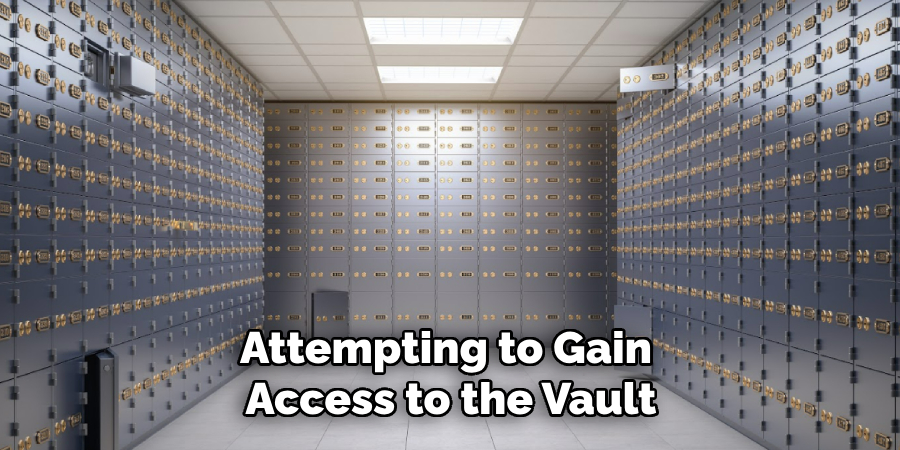
Regular audits can help identify any weaknesses or vulnerabilities that need addressing for optimal protection of the titanium vault.
Step 9: Create an Emergency Response Plan
Even with all the necessary precautions in place, there is always a possibility of a security breach. In such cases, having an emergency response plan in place can help mitigate any potential damage and minimize risks. This plan should include steps to take in case of a breach, how to contact authorities, and necessary protocols for lockdowns or evacuations.
All employees should be familiar with this plan and know their roles in executing it during an emergency situation.
Step 10: Conduct Regular Security Audits
Finally, conducting regular security audits is crucial in maintaining the ongoing reliability of your titanium vault’s security. These audits involve reviewing all security measures, identifying any potential risks or weaknesses, and making necessary updates or changes to ensure optimal protection.
Following these steps on how to secure titanium vault and regularly reviewing and updating security protocols will help ensure the safety of your high-value assets in the titanium vault. By combining advanced technology, strict access control, and employee training, you can creat a robust and effective security system for your most valuable possessions.
Frequently Asked Questions
Q: Can I Use Different Types of Locks for My Titanium Vault?
A: Yes, you can use various types of locks such as biometric, combination, or key-based locks, to secure your titanium vault. However, it’s vital to ensure that the chosen lock is of high quality and tamper-proof. Biometric access control systems are highly recommended for their advanced security measures.
Q: How Often Should I Conduct Security Audits for My Titanium Vault?
A: It’s advisable to conduct security audits at least once a year or whenever there are significant changes in the security landscape. Regular audits help identify any potential risks or vulnerabilities and allow for necessary updates or improvements to maintain the vault’s security.
Q: Can I Have Multiple Access Codes/Keys for My Titanium Vault?
A: It’s recommended to limit the number of individuals with access codes/keys to your titanium vault as much as possible. This helps minimize potential insider threats and ensure that only trustworthy individuals have access to the high-value assets stored inside. If multiple access codes/keys are necessary, it’s essential to have strict protocols in place for their handling and confidentiality.
Q: Is It Necessary to Secure the External Perimeters of the Titanium Vault?
A: Yes, securing external perimeters is crucial in maintaining the overall security of your titanium vault. This includes physical barriers such as fences or walls, as well as surveillance cameras and motion sensors. These measures serve as a first line of defense against potential intruders attempting to gain access to the vault. However, it’s also important to regularly monitor and maintain these perimeters to ensure they are not vulnerable to breaches.
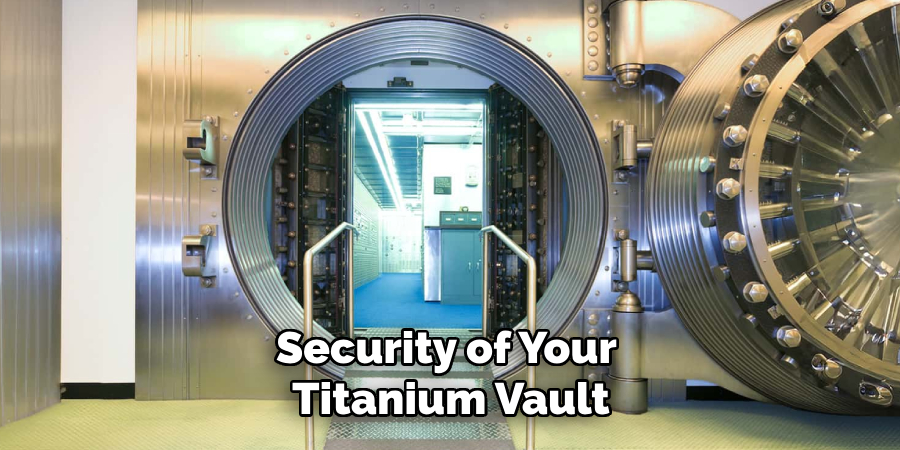
Conclusion
Securing a titanium vault is essential for safeguarding your high-value assets against potential threats. By implementing a comprehensive security strategy that includes advanced technology, effective access control measures, and regular employee training, you can create a robust line of defense. Regular reviews and updates to your security protocols are crucial in adapting to the evolving risk landscape.
In addition, maintaining secure external perimeters and conducting regular security audits further enhances the safety of your assets. By following these guidelines on how to secure titanium vault, you can ensure that your titanium vault remains a secure haven for your most valuable possessions, providing peace of mind and protection against unauthorized access.
Edmund Sumlin is a skilled author for Metal Fixes, bringing 6 years of expertise in crafting a wide range of metal fixtures. With a strong background in metalwork, Edmund’s knowledge spans various types of fixtures, from decorative pieces to functional hardware, blending precision with creativity. His passion for metalworking and design has made him a trusted resource in the industry.
Professional Focus:
- Expert in Metal Fixtures : Edmund aesthetic specializes in creating durable and innovative metal fixtures, offering both appeal and functionality. His work reflects a deep understanding of metalworking techniques and materials.
- Sustainability Advocate : He is dedicated to using sustainable practices, ensuring that every fixture is crafted with eco-friendly methods while maintaining high-quality standards.
In his writing for Metal Fixes, Edmund provides valuable insights into the latest trends, techniques, and practical advice for those passionate about metal fixtures, whether they are professionals or DIY enthusiasts. His focus on combining artistry with engineering helps others discover the true potential of metal in design.


